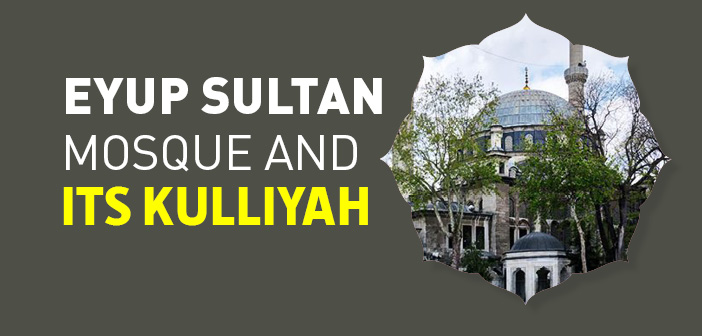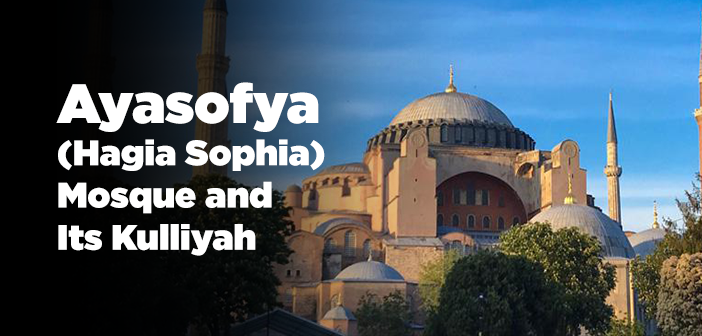Who was the first ansari in istanbul? Where is the eyup sultan mosque location?
“Surely, Constantinople (Istanbul) will be conquered. How blessed the commander who will conquer it, and how blessed the army that will conquer it!” (Ahmed, IV, 335; Hakim, IV, 468/ 8300)
The mosque and its district took their names from Abu Eyüp al Ansari (r.a.), one of the Companions of the Prophet (pbuh). This distinguished Companion who is known as “Eyüp Sultan” amongst the Turkish community and gave the real value to the city is buried in the tomb next to the mosque. He hosted our Beloved Prophet (pbuh) for almost 6 months in his house when he migrated from Mecca to Medina. Eyüp Sultan was also among the maternal relatives of our Prophet.
With the desire to be one of the soldiers of the Prophet (pbuh) praised in the above mentioned Prophetic saying, he participated the siege of Istanbul which was carried out by Umayyads in 668-669, and he was martyred there.
Before he was martyred, he had bequeathed the Muslim soldiers around him and asked them to dig his grave into the nearest place to the walls of the city. He wanted his grave to be a boundary stone for the soldiers who were going to come after them, in case Istanbul could not be conquered by them.
His grave had been lost for almost eight centuries following his burial. After the conquest of Istanbul, the place of his grave was discovered with the miracle of Akşemseddin, master of Sultan Mehmed II.
Fatih Sultan Mehmed had immediately a tomb built on this grave. In 1458, a mosque, a madrasa, a soup- Kitchen and a public bath house were also constructed near the mosque by the sultan. Unfortunately, the mosque we have today is not the same mosque, because the first mosque was so much damaged as a result of an earthquake that took place in 1766 that it could not be repaired. It was demolished by the order of Sultan Selim III and a new mosque was constructed between 1798 and 1800.
The tomb is the most significant structure in the complex around Eyüp Sultan Mosque. Utmost care has been shown to the tomb as a result of the respect to the person buried there. The tomb has an octagon shape with only one dome. The tiles used for the decoration are from 16th century, and they are very valuable. The cover of the wooden sarcophagus, adorned with tinsel, and its pure silver lattice are really marvels of art. Public bathhouse of the complex is the oldest Ottoman bathhouse reaching us today. Unfortunately, the madrasa and the soup- Kitchen did not survive.
Due to the great worth attributed to Eyüp Sultan, many people have desired his grave to be there. Surrounding area of the kulliyah has been ornamented, in the passing centuries, with tombs and graves.
The complex of Eyüp Sultan has a very special place in the Ottoman history. The ceremonies of putting a sword on organized for the new Sultan’s ascending to the throne used to be held in front of the tomb of Eyüp Sultan. This tradition of the state was started with Sultan Mehmed. While his own ceremony held next to the tomb, Sultan’s teacher Akşemseddin has girded the sultan with the sword.
The Kulliyah of Eyüp Sultan has been a very significant visiting place for centuries for both Muslims of Istanbul and Muslims living in other cities of Anatolia. Newborn babies are brought and see the first day light of their lives there. People whose funerals are performed in this mosque say goodbye to those whom they left behind in this life. You may see boys circumcised there. You may say “amen” for the prayers made by newlywed girls in their snow-white bridal dresses to have a peaceful family. In sum, if there is a life passing without performing even one prayer at Eyüp Sultan Mosque that life cannot be considered as it was lived.
Isn’t the blessing of the Creator enough for the people of this city
Bestowing the Companion of the Most Beloved, Aba Ayyub al-Ansari
Source: Harun Kırkıl, Read About and Travel Around ISTANBUL, Erkam Publications
Ayasofya (Hagia Sophia) Mosque and Its Kulliyah




